September 2 2006
Funny Cat Names Contest Kicks Off
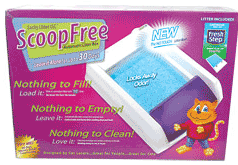 ScoopFree Automatic
LitterScoopFree and Animal Radio are looking for the funniest
cat names and the story behind them. Just submit your funny cat
name and story and you will be eligible to win one of 3 prizes.
Each prize consists of your choice of one Scoopfree automatic
litter box or (if you already own a ScoopFree) a case of 6 ScoopFree
Throwaway Trays filled with Fresh Step® Crystal litter.
ScoopFree Automatic
LitterScoopFree and Animal Radio are looking for the funniest
cat names and the story behind them. Just submit your funny cat
name and story and you will be eligible to win one of 3 prizes.
Each prize consists of your choice of one Scoopfree automatic
litter box or (if you already own a ScoopFree) a case of 6 ScoopFree
Throwaway Trays filled with Fresh Step® Crystal litter.
Listen to Animal Radio at www.AnimalRadio.com for chances to win additional
ScoopFree boxes, ScoopFree Throwaway Trays and other prizes for
you and your cat.
ScoopFree is the first litter box you
can leave totally alone for up to 30 days with one cat (15 days
with two cats)-no scooping, cleaning or refilling. It utilizes
our ScoopFree Throwaway Tray™ which comes pre-filled with
Fresh Step Crystal litter. The crystal litter absorbs the liquids
and dehydrates the solids, providing unbeatable odor control.
The box automatically rakes and grooms the litter and seals the
solid waste into a trap built into the tray, so you never have
to see, smell or touch messy waste. After about a month, just
remove the old tray and throw it away. Then replace with a new
tray and you have just cleaned you litter box for another month.
The contest begins at on September 1,
2006 and ends on September 30, 2006. If you are chosen as a winner,
you will be able to select which prize you want to receive. Winners
will be notified by email by October 16, 2006. Not valid where
prohibited by law.
http://scoopfree.com/contest/
ENTER FUNNY CAT NAMES CONTEST
Dick Van Patten
Natural Balance Eatables For Dogs
Dick Van Patten's Natural Balance Eatables
is the first canned dog food made not in a pet food plant,
but in a USDA plant, that makes food for humans. But while it
looks like a home-cooked meal save it for your dogs.
 The Eatables for Dogs is a holistic dog food (they
also make holistic cat food) with no fillers, no wheat, no soy
and no by-products.
The Eatables for Dogs is a holistic dog food (they
also make holistic cat food) with no fillers, no wheat, no soy
and no by-products.
Previous varieties include Irish Stew;
Chinese Take-Out and Hobo Chili. Recently released is the Southern
Style Dumplin's with Gravy. Listen in as Hal (our taste-tester) tries
the Dumplin's.
If it's good enough for Dick Van Patten
to eat (and Hal at Animal Radio®) then it's good enough for your dog!
http://www.NaturalBalanceInc.com
Internet Ssssssssensation - Snakes
on a Plane
David Waldon, Entertainment
Reporter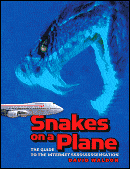
Like some slithery, fork-tongued
version of the proverbial snowball, Snakes on a Plane (SoaP
to those in the know) keeps gathering speed. Not since Jaws
has a movie been so feverishly anticipated, and not since The
Blair Witch Project has an underground cult film been transformed
into an international phenomena by the tireless work of the fans
themselves.
An action film starring the king of action
himself, Samuel L. Jackson, Snakes on a Plane was hailed
as the "sleeper hit of the summer" by Stephen King in
Entertainment Weekly. Its buildup is perplexing and impossible-to-ignore,
and has been featured on CNN, NPR, The Washington Post,
The Chicago Tribune, The Hollywood Reporter, and on legions
of blogs and web sites. Reportedly, New Line Cinema re-titled
the film Pacific Flight 121, provoking outrage in cyberland and
by even Jackson himself.
Now comes Snakes on a Plane: The Guide
to the Internet Sssssensation, the story of the making of
the movie itself and the Internet's buildup that convinced the
producers to bring back the stars for re-shoots in order to satisfy
the expectations of the fans. Snakes on a Plane is lavishly
illustrated, featuring much of the fan's original artwork.
Rescuing the Pets of New Orleans
 Troy Snow, Not Left Behind
Troy Snow, Not Left Behind
Not Left Behind is the story of
how Best Friends Animal Society rescued thousands of pets from
the storm-ravaged, flooded streets of New Orleans in the wake
of Hurricane Katrina. The story is told through the images of
Best Friends photographer Troy Snow and the words of five Best
Friends rescuers-frontline troops representing thousands of volunteers
across the country who helped save lives and reunite families.
Troy recounts stories of rescuing the
animals of Katrina firsthand. In one such story. Troy talks about
coming across two Pit Bulls standing on a car, with water up to
their feet. One of the Pit Bulls jumped into the water and started
swimming towards the boat. Troy was a little cautious; after
all, it was a starved and sunburned Pit Bull. The dog then swam
up to Troy, who did what anyone else would have done, he pulled
the dog into the boat. It was an anxious moment for Troy, but
his fears were soon put to rest. The dog started nuzzling into
his neck and his tail was thumping against the sides of the boat.
The other Pit Bull was also then rescued.
One of Troy's favorite photos is of a
woman, who came to the sanctuary looking for her golden retriever--
and found her! This lady said that she had lost everything she
owned, and all she cared about was her baby, and so as far as
she's concerned she hasn't lost a thing.
All royalties from this book will go to the Best Friends rescue
fund. The Best Friends Rescue Fund provides for animals who need
emergency care while members are working to place them in new
homes or organize whatever long-term care they will be needing.
There are two ways to Order Not Left Behind:
Send a check or money order for $19.95
Plus $5.99 shipping and handling to:
Best Friends Store
P.O. Box 149
Kanab, Utah 84741
Or Get it Online
Losing a Pet
Dr. Jim Humphries,
Veterinary News Network
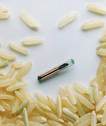 A
national survey reveals that losing a pet can be more traumatic
than losing your job. The survey reveals that more than four
in five, or 85% of dog and cat owners, would consider losing their
pet to be extremely or very traumatic. And interestingly, more
than three in five consider pet loss more traumatic than events
such as getting in a car accident, breaking a bone or losing a
job. Yet, surprisingly, just 14% of dog and cat owners have micro-chipped
their pets to help insure their recovery if the pets becomes lost
or missing. Micro-chipping is a safe, simple and permanent form
of pet identification, that provides pet owners and their pets
with the best chance of being reunited.
A
national survey reveals that losing a pet can be more traumatic
than losing your job. The survey reveals that more than four
in five, or 85% of dog and cat owners, would consider losing their
pet to be extremely or very traumatic. And interestingly, more
than three in five consider pet loss more traumatic than events
such as getting in a car accident, breaking a bone or losing a
job. Yet, surprisingly, just 14% of dog and cat owners have micro-chipped
their pets to help insure their recovery if the pets becomes lost
or missing. Micro-chipping is a safe, simple and permanent form
of pet identification, that provides pet owners and their pets
with the best chance of being reunited.
According to the survey, only 1/3 of all
dog and cat owners are familiar with the process of micro-chipping.
However, of those pet owners who have had their dog or cat micro-chipped,
nearly 9 in 10, or 86%, now feel more secure about their dog or
cat's safety. In the wake of last year's record setting hurricane
season, 45% of dog or cat owners surveyed said they are very concerned
about the safety of their pet. However, only 28% took action.
Of those who took action to make their pet safer, 16% chose to
micro-chip their pet.
Micro-chipping is a simple procedure that
is done without anesthesia and produces no more discomfort to
the pet than a routine vaccination. The micro-chip is about the
size of a grain of rice and is easily injected by a veterinarian
under the skin, near the shoulder blades of your pet.
http://www.VetNewsNet.com
Early Bird Catches the Worm
Britt Savage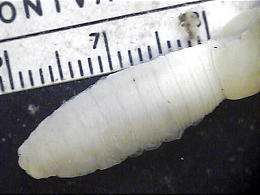
The early bird usually catches
the worm, but in this case, I think they might want to sleep in.
A recent discovery has been made of the
giant Palouse earthworm, which is albino-pale, smells like a lily
and can tunnel 15 feet deep.
Scientists originally thought the giant
earthworms were extinct, because they hadn't been seen since the
1980's. The Palouse that was dug up is only 6 inches long, which
means it might be a young adult.
To date, not much is known about these
giant worms.
Bark at the Park
Charlotte, Reed,
Special Correspondent
 Charlotte comes to us live from
the Atlanta Braves Baseball game where fans were invited to bring
their "best friends" to the ballgame on Sunday, August
27th, for the Braves first ever, Bark in the Park, presented by
Central Garden & Pet, makers of Zodiac and Nylabone pet products.
Charlotte comes to us live from
the Atlanta Braves Baseball game where fans were invited to bring
their "best friends" to the ballgame on Sunday, August
27th, for the Braves first ever, Bark in the Park, presented by
Central Garden & Pet, makers of Zodiac and Nylabone pet products.
For those that are planning to attend
one of these games with their furry friend, Charlotte offers some
great tips:
- Prevent food fights. Don't create a
frenzy by treating your dog to hot dogs or other snacks in close
proximity to the other dogs.
- Always clean up after your dog. Even
though provisions are made, play fair. Bring plenty of bags to
scoop the poop.
- Have your pet look the part of an MVP
(most favored pooch) by bringing a clean dog dressed for success.
Have your dog wear a pet-safe jersey or costume.
- Leave his toys at home. Although catching
is his favorite thing to do, prevent doggy disagreement by leaving
his possessions at home.
- Buy two seats for a large dog, not just
one. Eliminate problems by giving yourself plenty of room between
you and other pet-owning fans.
http://www.Central.com
http://www.MLB.com

Talk With Your Animals
Joy Turner
Joy speaks with Gina, a Barbados
sheep, who went missing for three days but is back home now.
http://www.TalkWithYourAnimals.com
A Celebrated Psychic Teaches You to
Talk to Animals
Amelia Kinkade, The
Language of Miracles
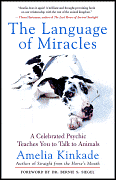 As
a professional animal psychic, Amelia Kinkade helps clients locate
lost pets, diagnose baffling behavior, and further explore the
indelible bond that exists between people and their animal companions.
But her real mission is to convince people that, with the proper
dedication, training, and understanding, everyone can do what
she does. Here, she explains the subtle cues that form the foundation
of animal communication, and provides guided exercises that allow
readers to explore these cues for themselves. With gentle encouragement,
she shows how to look for communications typically drowned out
in the noise and chaos of modern life, whether they take the form
of clairaudience or clairvoyance. Filled with amazing stories,
The Language of Miracles inspires readers to sit down with the
animals in their lives and explore the unspoken world between
them.
As
a professional animal psychic, Amelia Kinkade helps clients locate
lost pets, diagnose baffling behavior, and further explore the
indelible bond that exists between people and their animal companions.
But her real mission is to convince people that, with the proper
dedication, training, and understanding, everyone can do what
she does. Here, she explains the subtle cues that form the foundation
of animal communication, and provides guided exercises that allow
readers to explore these cues for themselves. With gentle encouragement,
she shows how to look for communications typically drowned out
in the noise and chaos of modern life, whether they take the form
of clairaudience or clairvoyance. Filled with amazing stories,
The Language of Miracles inspires readers to sit down with the
animals in their lives and explore the unspoken world between
them.
http://www.AmeliaKinkade.com
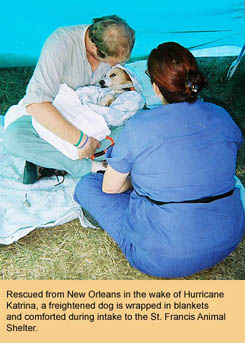 Surviving Tylertown
Surviving Tylertown
Mike Fry, Animal
Ark Animal Shelter and Host of Animal Wise RadioNote: Kelli
Ohrtman is a freelance writer
who has contributed works to publications including TC Dog
Magazine and the Rake. She was one of the first
Animal Ark volunteers to head to Tylertown, Mississippi to help
with Hurricane Katrina rescue efforts there. Since then, she has
worked for Animal Ark and Best Friends Animal Society as a valuable
team member supporting our efforts.
The following article was written by Kelli
during a tour of duty in Tylertown.
A tanned, rugged-type guy held a black
dog in his arms, while a vet from Chicago picked ticks, one at
a time, from the dog's left ear. I forgot that ticks make me cringe
the way leeches and fingernails on a chalkboard do, so I stepped
over and began to pick at the right ear. I said, "I have
nails, let me do the other one."
The man holding the dog was tired. He'd
been up since six am, lugging, walking, carrying dogs back and
forth all day to the intake area where we were working, but he
stood quietly while we picked. The dog was tired, too. He'd just
been through a hurricane; had lived alone in the mangled streets
of New Orleans for a couple weeks, until strange people in trucks
came roving through what used to be a neighborhood to capture
him. He was stuffed in a crate like the twenty or so other animals
caught that day, and put on a truck to be driven two hours to
a camp in Mississippi. He didn't mind the picking.
Black ticks are hard to find on a black
dog's ear, so I hunted them down by feel, massaging the smooth
ear flap in search of each tiny lump. PBS specials with primates
digging for bugs on one another came to mind. I searched just
as hungrily, but stopped at shoving the ticks into my mouth with
one hand while digging for more with the other. Instead, I sliced
each one with a little "pop," and smeared the dot of
blood on a paper towel. While we picked, the rest of the dogs
caught the day before waited in holding pens. While they waited,
hundreds of other dogs sat in hastily-erected pens. Cats waited
in cages that were stacked two or three high in the little indoor
space available.
I used to be an animal person. I mean,
animals used to be my life. But the past few years, a lot of traveling
and a budding writing career pushed the "animal nut"
part of me aside and replaced it with city life; art galleries,
films and music, sports, travel, wine and good restaurants. Now
I stood in filthy clothes with vaccine syringes shoved in one
pocket, leashes draped around my shoulders - just in case, and
a squirt of dewormer smeared on my hat.
During the first few weeks of the rescue
effort, people, dogs and cats crashed with heat stroke. Weeks
dragged into months after Katrina, and soon video clips of the
Superdome only surfaced every few days or so on CNN News, and
we put donated doggie sweaters on the little dogs to keep them
warm in the cold damp evenings. Organizers began planning a Thanksgiving
feast for volunteers. But the animals kept coming in, and people
who lost everything still came looking for their pets. Usually
that was a happy occurrence. Sometimes it made you want to take
a bottle of euthanasia solution and put it to good use, and not
on the animals, I might add.
One day, a woman arrived at the camp to
search for a friend's cat. A volunteer stopped working for a few
minutes to take her through the cat areas to peer into each cage,
looking for a fluffy gray tabby. She didn't find her friend's
cat. And then she broke down into body-shaking sobs. She cried
a little bit for the cat, but more for telling the story.
She and the woman who lived in the next
apartment were good friends - both cat owners. When the levees
broke and water rose, they stuffed their cats into carriers and
left the apartment building to wait out on the expressway where
buses waited to drive them all to safety. That's where they were
told, "no animals allowed." The woman shuddering in
the cat room that day got on the bus, while her friend refused
to leave her cats. She went back to the apartment to brave the
waters.
I can hear the collective sighs of disgust
from readers who are not cat people, or are cat people but still
wouldn't trade a bus ride to safety to brave a hurricane with
a four-legged litterbox filler. But that's what the woman did,
and what happened to her is not her fault.
Sometimes the animal rescue side of disaster
relief is sort of warm and fuzzy. Sometimes literally. There's
something about a dog who has swum to safety atop a roof, sat
for days, and then wags its tail when a stranger plops it into
the safety of a boat. It's such a simple, easy-to-see gratitude.
We saved the sort of pets whose owners
drove from one animal rescue to the next, stopping at nothing
to find their dog or cat. We saved pets who were found in their
homes with their dead owners. We found dogs still living in their
destroyed homes, eating their canine buddy that happened to have
died first. And in the same way that a natural disaster of Katrina's
magnitude peeled away the thin veil covering much bigger social
and economic problems, we saw the same in the animal-owning community.
We saved the trailer park dogs, the "yard
dogs" who lived on a chain, if they were still alive. We
got dogs out of crack houses, pit bulls trained to fight each
other - their ears lopped off down to little nubs in obvious home
ear-crop jobs. We found the "bait" dogs used to give
fighting dogs a first taste of blood.
When you're there, working, you can't
take all that in. You can't take the constant barking from the
hundreds of dogs shacked up in chain link dog runs. You can't
look at the number of pit bulls and rottweilers that are still
there while most of the "family-type" breeds have long
been fostered out into homes. Sometimes you just have to concentrate
on one thing. One tiny thing, until you get grounded enough to
keep your legs moving and hands working.
So I picked ticks until the little black
ear flap was smooth. When the tanned guy put the dog on the ground,
it gave a little wiggle and then bounded ahead to strain on its
leash. Another person brought another dog from the holding area,
and we started the process again.
http://www.AnimalArkShelter.org
Frolicking Whales and Dolphins
Jan Sluizer
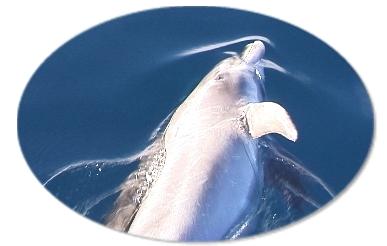 Jan
reports on a catamaran ride of the south Maui coast to watch whales
and dolphins frolic.
Jan
reports on a catamaran ride of the south Maui coast to watch whales
and dolphins frolic.
http://www.ArtfulDolphin.com
Mosquitoes - Why?
Rae Ann Kumelos,
Voice of the Animal
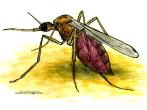 Possibly
the most despised and dangerous creature on Earth, Mosquito features
prominently in everything from the journals of Lewis and Clark
to Native American mythology to the trials and tribulations of
the Dalai Lama.
Possibly
the most despised and dangerous creature on Earth, Mosquito features
prominently in everything from the journals of Lewis and Clark
to Native American mythology to the trials and tribulations of
the Dalai Lama.
http://www.VoiceOfTheAnimal.org
Listen to the
1st Hour ABRIDGED VERSION Podcast of this show (#353).
Purchase
a CD Copy of this Show
 View Animal Radio
Network® Broadcast Schedule in a new window.
View Animal Radio
Network® Broadcast Schedule in a new window.
 Listen
to Animal Radio®
- Go to the launch page
Listen
to Animal Radio®
- Go to the launch page
 Return to Animal Radio Network®
Home Page
Return to Animal Radio Network®
Home Page
 Read August Newsletter
Read August Newsletter
Copyright 2006
All Rights Reserved Animal Radio Network LLC
 ScoopFree Automatic
LitterScoopFree and Animal Radio are looking for the funniest
cat names and the story behind them. Just submit your funny cat
name and story and you will be eligible to win one of 3 prizes.
Each prize consists of your choice of one Scoopfree automatic
litter box or (if you already own a ScoopFree) a case of 6 ScoopFree
Throwaway Trays filled with Fresh Step® Crystal litter.
ScoopFree Automatic
LitterScoopFree and Animal Radio are looking for the funniest
cat names and the story behind them. Just submit your funny cat
name and story and you will be eligible to win one of 3 prizes.
Each prize consists of your choice of one Scoopfree automatic
litter box or (if you already own a ScoopFree) a case of 6 ScoopFree
Throwaway Trays filled with Fresh Step® Crystal litter.
 The Eatables for Dogs is a holistic dog food (they
also make holistic cat food) with no fillers, no wheat, no soy
and no by-products.
The Eatables for Dogs is a holistic dog food (they
also make holistic cat food) with no fillers, no wheat, no soy
and no by-products.
 Troy Snow, Not Left Behind
Troy Snow, Not Left Behind A
national survey reveals that losing a pet can be more traumatic
than losing your job. The survey reveals that more than four
in five, or 85% of dog and cat owners, would consider losing their
pet to be extremely or very traumatic. And interestingly, more
than three in five consider pet loss more traumatic than events
such as getting in a car accident, breaking a bone or losing a
job. Yet, surprisingly, just 14% of dog and cat owners have micro-chipped
their pets to help insure their recovery if the pets becomes lost
or missing. Micro-chipping is a safe, simple and permanent form
of pet identification, that provides pet owners and their pets
with the best chance of being reunited.
A
national survey reveals that losing a pet can be more traumatic
than losing your job. The survey reveals that more than four
in five, or 85% of dog and cat owners, would consider losing their
pet to be extremely or very traumatic. And interestingly, more
than three in five consider pet loss more traumatic than events
such as getting in a car accident, breaking a bone or losing a
job. Yet, surprisingly, just 14% of dog and cat owners have micro-chipped
their pets to help insure their recovery if the pets becomes lost
or missing. Micro-chipping is a safe, simple and permanent form
of pet identification, that provides pet owners and their pets
with the best chance of being reunited. 

 As
a professional animal psychic, Amelia Kinkade helps clients locate
lost pets, diagnose baffling behavior, and further explore the
indelible bond that exists between people and their animal companions.
But her real mission is to convince people that, with the proper
dedication, training, and understanding, everyone can do what
she does. Here, she explains the subtle cues that form the foundation
of animal communication, and provides guided exercises that allow
readers to explore these cues for themselves. With gentle encouragement,
she shows how to look for communications typically drowned out
in the noise and chaos of modern life, whether they take the form
of clairaudience or clairvoyance. Filled with amazing stories,
The Language of Miracles inspires readers to sit down with the
animals in their lives and explore the unspoken world between
them.
As
a professional animal psychic, Amelia Kinkade helps clients locate
lost pets, diagnose baffling behavior, and further explore the
indelible bond that exists between people and their animal companions.
But her real mission is to convince people that, with the proper
dedication, training, and understanding, everyone can do what
she does. Here, she explains the subtle cues that form the foundation
of animal communication, and provides guided exercises that allow
readers to explore these cues for themselves. With gentle encouragement,
she shows how to look for communications typically drowned out
in the noise and chaos of modern life, whether they take the form
of clairaudience or clairvoyance. Filled with amazing stories,
The Language of Miracles inspires readers to sit down with the
animals in their lives and explore the unspoken world between
them. Surviving Tylertown
Surviving Tylertown  Jan
reports on a catamaran ride of the south Maui coast to watch whales
and dolphins frolic.
Jan
reports on a catamaran ride of the south Maui coast to watch whales
and dolphins frolic. Possibly
the most despised and dangerous creature on Earth, Mosquito features
prominently in everything from the journals of Lewis and Clark
to Native American mythology to the trials and tribulations of
the Dalai Lama.
Possibly
the most despised and dangerous creature on Earth, Mosquito features
prominently in everything from the journals of Lewis and Clark
to Native American mythology to the trials and tribulations of
the Dalai Lama.